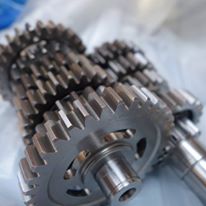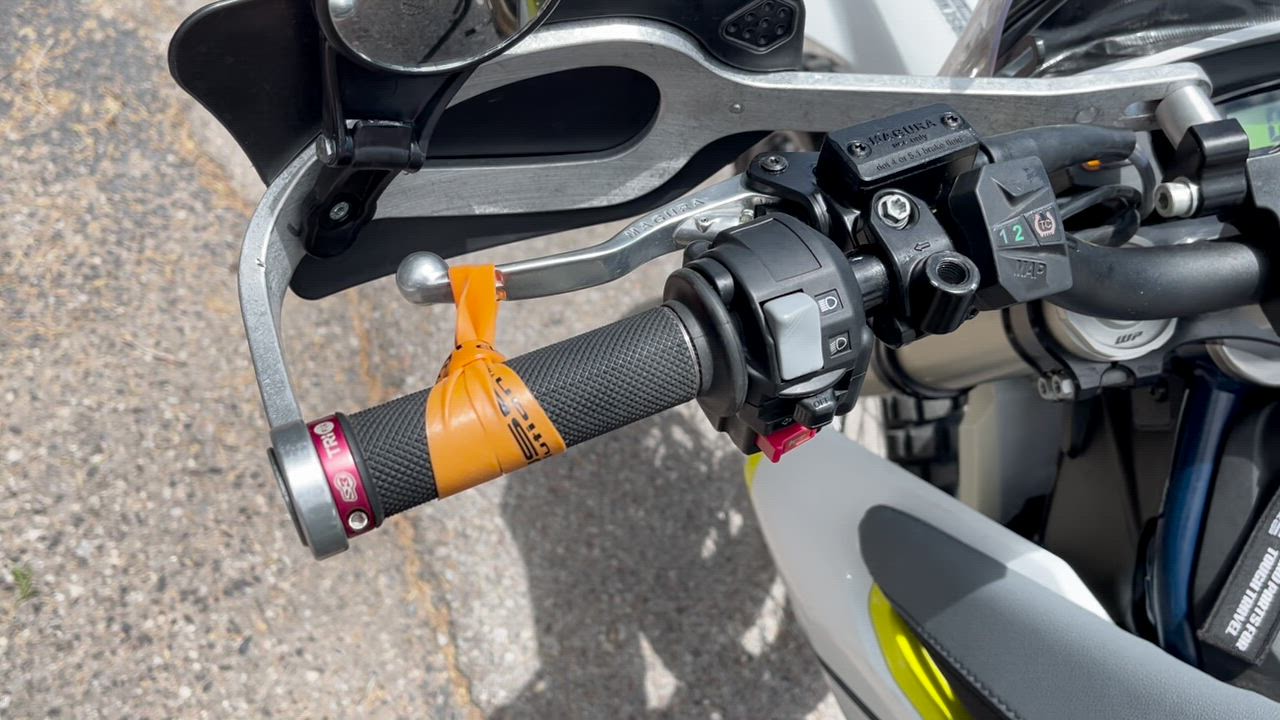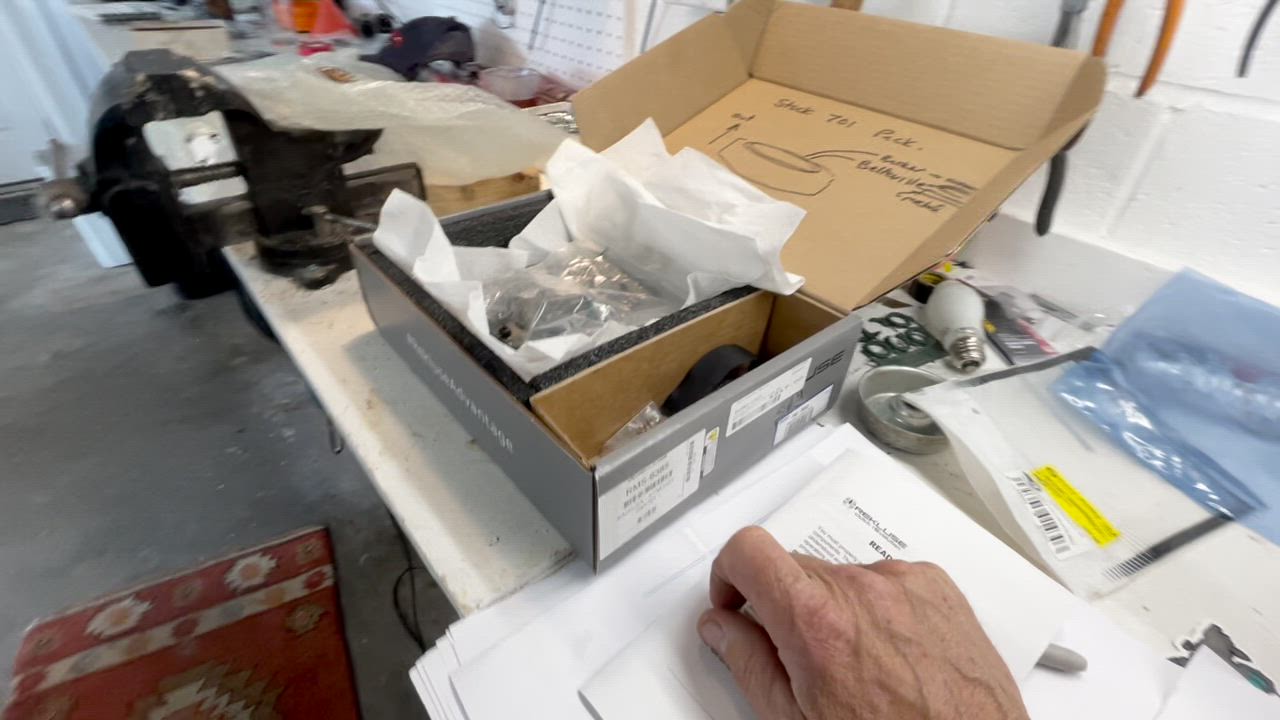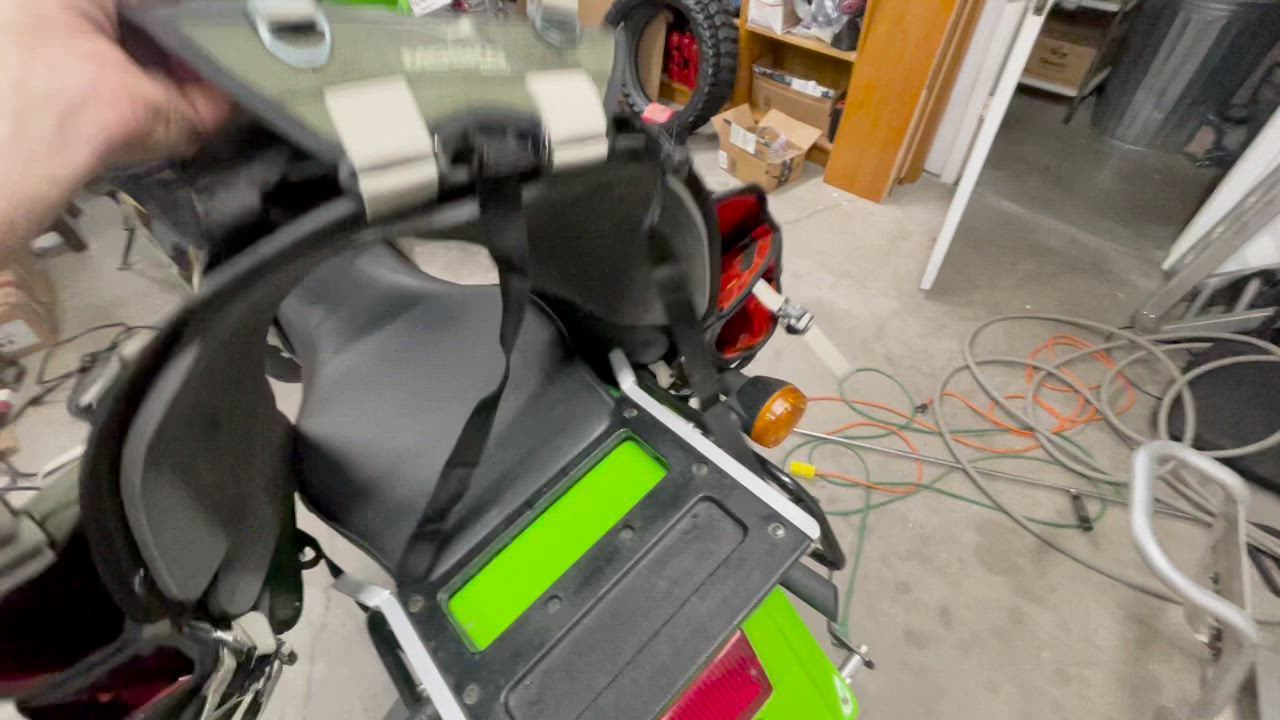TA DA!
I was finally able to put in about 7 hours of work on the 701. Big progress for one day of work! Since this step of de cluttering plus controls simplification was such a critical step to my long running, overall plan, this post documents the two in detail, with a video and pix. Enjoy!
Overview video:
This video hosted by SmugMug; your photos and videos look better here.

buffalodream.smugmug.com
The big enabler of simplification is the excellent Rekluse auto clutch for the excellent Adler clutch on the Husqvarna 701/KTM 690. The need for decluttering would be there - for some of us anyway -regardless, as I, and many a fellow high-skill and off-road-biased rider find ABS and TC (traction control) an unwelcome and not-entirely-predictable intervention between our well developed brains and skills and what happens on the ground. When I almost went off a fatal cliff a while back because the front ABS cut braking power suddenly too early, I realized then that elimination of ABS
on my bike was critical to me staying alive and uninjured. I am in no way asserting that
this would be the case for you and your bike.
After the discovery, based on info from the web, that simply removing the rear pulse counter from its swingarm mounting hole, such that it would be present in the system, but not count pulses, would disable BOTH the rear AND front ABS, and also the TC (traction control), I felt at liberty to start to roll-back the complexity, clutter, and the added weight of ABS. (Gosh that was a long sentence.) Of course when I sell this bike - if I ever do - I will make sure the buyer is high skill and have that buyer sign a statement saying that I fully disclosed my modifications and their implications, and that the buyer understands and personally owns the associated risks and responsibilities. But the powers may make riding fuel powered bikes illegal by then anyway, in line with Rush's song describing a freer and better world before the 'motor law.'
Yesterday's work resulted in less crap on my bike, and the right side of the bike in particular is cleaner looking:
Gone off my bike are:
- ABS and TC that I have to remember to turn off every time I throw a leg over.
The rear pulse counter and line, formerly running along the rear break line to the rear caliper now is now pulled up to under the seat and curled up near the battery. It needs to be 'seen' as still there by the ABS brain so the ECU won't 'throw a code' for faulty rear speed sensor. I do not know where in the harness the line comes from yet, as that wire harness branch or connector is buried somewhere in the fuel tank area. Some day I'll at least shorten the wire to tuck it out of the way better. And related:
- The map and TC handlebar switch
This push button and lighted switch set, formerly clamped to the bars, was in the way of the new rear brake clutch master cylinder, and is no longer needed, so I'm nesting it behind the headlight. After deleting it, the thing has 5 wires that do mystery things, so to not trigger codes I am retaining it for now.
- The Magura 11mm master cylinder, its hydraulic line, and its normally open (NO) clutch switch
The Magura is a DOT 4 master cylinder so it could have been served for the left-hand rear brake. But experience has shown the Brembo 10mm DOT 4 based clutch master cylinder ( in this case Brembo XR 01610) is right(er) for this application in lever feel and degrees of movement to full power of the rear brake.
- The stamped and slotted steel rear pulse counter disc
Don't need to count pulses back there any more, so it was deleted as clutter. The slotted rotor shares the rear disk T30 Torx screws, so it was just a matter of removing the slotted rotor and replacing the screws.
- Both of the rear brake hydraulic lines to and from the ABS module
I 'capped' the open ports with full braking fluid (just in case) with the banjo bolts cut shorter and a stack of banjo washers for full sealing.
- The foot brake assembly, lever, master cylinder, reservoir, and other associated bits
Now I can't mistakenly step on the rear brake when riding, and it's nice a clean not having all that stuff there.
So clean!
No more rear brake pedal to bash and bend, and inadvertently step on when struggling in technically difficult places. Having a right foot on the peg, positioned correctly, for rear braking, is no longer required. No more sliding back when aborting a steep hill climb (when you can't turn out sideways to the slope) because the front wheel is unloaded and a locked front brake can hold the bike in position due the weight bias shift to the rear. On a standard-clutch bike, slipping the clutch is the backup rear brake, but when the sphincter slams shut and one is in mental overload, it's easy to get 'pilot overload' and forget you have that option. With hand brakes one can stick like glue to a steep when aborting a climb, freeing both feet to dab or for repositioning the bike.
The new Brembo Master cylinder and custom Spiegler hydraulic line EL-1675-002-511-0075-320. Having now installed it, I'm changing the more ideal spec to EL-1665-002-511-0100-340, shortening the line a bit and lengthening the the protective sleeve on the swing arm just a bit. The M10X1.0 end of the Spiegler line at the master cylinder may require two instead of one aluminum crush washer. Check to see if the threads bottom out first with one crush washer. BTW I always remove the threaded extension of Brembo master cylinder and screw the line directly into the master cylinder. If you don't, the hydraulic line gets pushed too far toward the center of the bike. After removing the extension, check that no Loctite is left behind in the threads. I had top pick some of that out of this (new) master cylinder to get the adapter to thread in without resistance.
Note the ergonomic positioning with master cylinder farther in on the bars. I do that on my bikes anyway, for less finger force required, but in this case the position was required to have the lever adjust screw clear the switch housing at the small yellow circle:
The Spiegler brake line takes the same routing as the former clutch line. It turns and goes down, resting in a groove molded into the wiring cluster enclosure (here shown pulled out away from the top triple clamp), affixed with a zip tie at the red:
The Spiegler line follows the old routing of the clutch line where it passes behind the plastic cover to inside the (former) stock airbox cavity:
Then in the cavity is follows roughly the same route, but I did not tie it to the frame rail:
Then it goes loosely around the cylinder head to aim in two curves at a pass-though on the right side:
...where the line passes through between the center case and frame:
Note how the line is zip tied down to the swing arm. That's to keep the line closer to the swing arm pivot and thus minimize movement of the line under suspension stroking. Note also how clean the right side of the bike under the frame rails now is. No more gaggle of ABS-related brake lines. And no more brake line mounting hardware and rear brake master cylinder reservoir.
Passing the Spiegler line banjo through from left to right side requires removing a bit of the corners of two prominences on the center case (orange). I used a coarse rat tail file. It didn't take much material removal, but the step is required to use the most ideal routing for the Spiegler line, which is the yellow area:
Then back at the rear caliper the Speigler line and the parallel two-wire line for the repositioned break stop switch:





